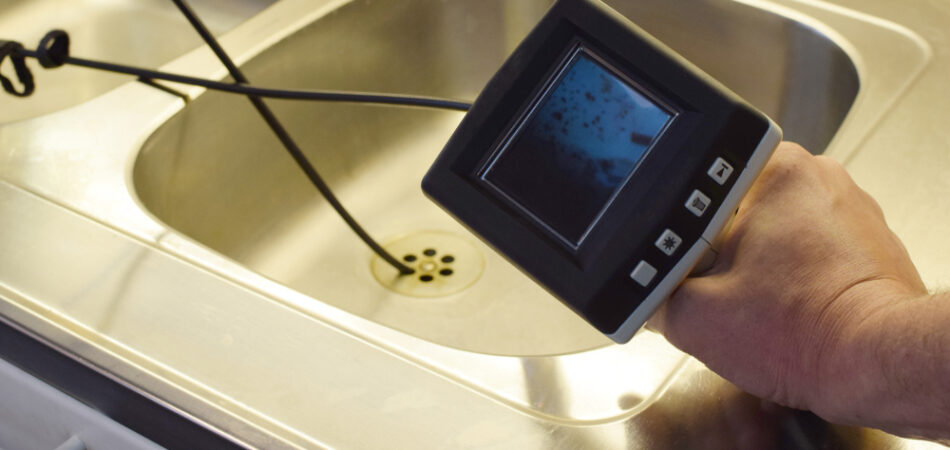
In the world of plumbing and maintenance, understanding the condition of your sewer lines is crucial for preventing major issues. One of the most effective methods for assessing the state of your sewer system is by using a camera inspection. This modern technique has revolutionized how plumbers diagnose problems and plan repairs. However, like any tool or method, it has its pros and cons. In this article, we’ll delve into the benefits and drawbacks of using a camera to inspect your sewer lines before proceeding with any cleaning.
The Benefits of a Sewer Camera Inspection
1. Accurate Diagnosis
One of the primary advantages of using a sewer camera is its ability to provide a precise diagnosis of the problem. Traditional methods of inspecting sewer lines often involve guesswork and invasive procedures. With a camera inspection, plumbers can see exactly what is happening inside the pipes, allowing for a more accurate identification of issues such as blockages, leaks, or damage.
2. Minimally Invasive
Camera inspections are notably less invasive compared to traditional methods. Rather than digging up your yard or tearing into walls to access the sewer lines, a small camera is inserted into the pipe through a clean-out or access point. This method helps preserve your property and reduces the need for extensive repairs or cleanup.
3. Saves Time and Money
By pinpointing the exact location and nature of a problem, sewer camera inspections can save time and money. Plumbers can focus their efforts on the specific issue, rather than engaging in trial-and-error approaches. This targeted approach can lead to quicker resolutions and potentially lower repair costs.
4. Preventative Maintenance
Sewer camera inspections are not only useful for diagnosing current problems but also for preventive maintenance. Regular inspections can help identify potential issues before they become major problems, allowing homeowners to address them proactively. This can extend the life of your sewer system and avoid costly emergency repairs.
5. Detailed Reports
Most sewer camera inspections come with detailed reports and footage of the condition of your pipes. These reports can be valuable for record-keeping and future reference. If you’re considering buying or selling a property, having a comprehensive sewer inspection report can provide insight into the condition of the sewer system and influence your decision-making process.
6. Better Planning for Repairs
Once the problem has been accurately diagnosed through a camera inspection, plumbers can create a more effective and targeted repair plan. This means less guesswork and more efficient repair strategies, ultimately leading to better outcomes and longer-lasting fixes.
The Drawbacks of Using a Camera to Inspect Sewer Lines
1. Initial Cost
One of the main drawbacks of sewer camera inspections is the initial cost. While the technology has become more affordable, it still represents a significant investment for homeowners and plumbing companies. For some, the cost of the inspection might seem high, particularly if there are no immediate issues with the sewer lines.
2. Limited Detection Capabilities
While sewer cameras are excellent for identifying blockages, cracks, and other visible issues, they have limitations. They may not always detect all types of problems, such as those caused by tree roots or more subtle structural weaknesses. In some cases, additional diagnostic methods may be required to get a complete picture of the sewer line’s condition.
3. Requires Professional Operation
Operating a sewer camera and interpreting the footage requires expertise. While the camera provides a visual feed, understanding the results and diagnosing issues accurately necessitates experience and training. Homeowners attempting to use a camera without professional assistance may not get accurate results and could misinterpret the data.
4. Potential for Misuse
If not used properly, sewer camera inspections can lead to inaccurate assessments. For example, if the camera is not inserted correctly or if the footage is not analyzed thoroughly, there’s a risk of missing important details. This can lead to incomplete diagnoses and potentially ineffective repair solutions.
5. Not a Cure-All
A sewer camera inspection is a powerful diagnostic tool but it’s not a cure-all. It doesn’t address underlying problems such as sewer system design flaws or issues with connections to municipal systems. While it provides valuable information, it’s only one part of a comprehensive approach to sewer maintenance and repair.
6. Requires Access Points
For a camera inspection to be effective, there must be access points to insert the camera into the sewer lines. In some cases, finding or creating these access points can be challenging. If access points are not available or easily accessible, the inspection may be more difficult or less effective.
Conclusion
Using a camera to inspect your sewer lines before cleaning offers several benefits, including accurate diagnosis, minimal invasiveness, time and cost savings, and better planning for repairs. However, it’s important to consider the drawbacks, such as the initial cost, limited detection capabilities, and the need for professional operation. Ultimately, the decision to use a sewer camera inspection should be based on the specific needs of your sewer system and the potential benefits it can provide. By weighing the pros and cons, you can make an informed decision and ensure the best possible care for your sewer lines.
Need a Plumbing Contractor in Jupiter, FL?
At Plumb-Rite Plumbing Sewer & Drain Services, we are the best emergency plumber company in West Palm Beach and Jupiter. FL. We offer a comprehensive range of plumbing services and specialize in residential and commercial plumbing and drain cleaning maintenance. Contact us today for more information. We look forward to working with you!

